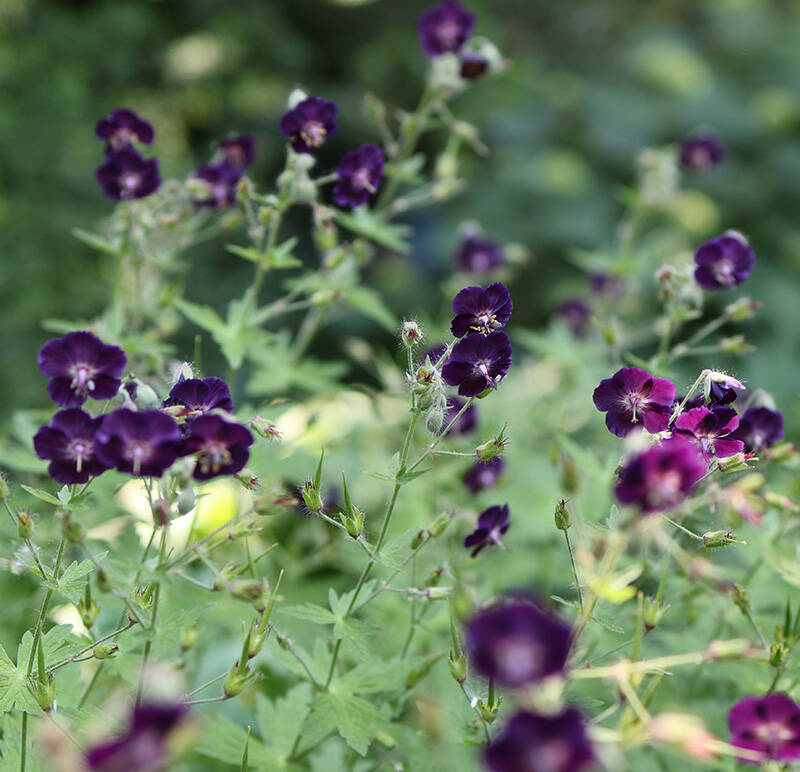Herbs. They can turn us into self-sufficient creatives at the flick of a knife, the motion of a spoon. Take some Greek yogurt, add a flurry of just-chopped, fragrant herbs. Stir it, nestle it in cheesecloth overnight, and unmold its tender form next day. It is a perfectly re-imagined “cheese”—(really labneh), a gorgeous, soft ball of spreadable flavor, a celebration on a plate, ready for a party, for a picnic, or for a dreamy snackboard centerpiece.
It’s easy, it’s fun, and it tastes of the season, whatever that may be.
Photography by Marie Viljoen.

Boursin, the lusciously soft cheese from Normandy, redolent of herbs and garlic, is the closest equivalent to this creamy treat, and it certainly served as inspiration for my tinkering in the kitchen one spring. I was searching for persuasively delicious ways to use ground elder (Aegopodium podagraria, also commonly called bishop’s weed, and goutweed), a pretty European perennial that has escaped gardens and become a super-invader in the Northeast, where it can march greenly across forest floors to smother native species like Trillium, Virginia bluebells, and bloodroot. But it does taste good, if you are partial to tender celery leaves and lovage. Served forth in the rich folds of full-fat yogurt, drained overnight to become firm, it makes a compelling case for eating the weeds.


Since then there have been dozens of iterations, some very restrained: In winter they may feature only a single herb in the form of a salt, some are feral with foraged plants like field garlic or ramps, and some are domestically exuberant with cultivated culinary herbs.



The cheese is obligingly adaptable. A farmers market bouquet of chive flowers creates an unusually pretty iteration for the herb cheese, the petals picked off the pom-pom-fat heads. Ramp leaf salt, made by blending ramp leaves with salt until wet and green, and then air-drying the mixture, can be a year-round theme. Field garlic (Allium vineale), a weed impervious to over-harvesting (unlike native ramps), works beautifully and is in season from late fall through spring. Peppery nasturtium leaves and flowers can be used. In South Africa one winter I added three-cornered leek leaves: Allium triquetrum is invasive in Cape Town but as powerfully flavored as all its onion cousins.


Society garlic (Tulbaghia violacea) has ornamental and pungent flowers and is an outstanding addition to a herb garden, since it is edible from its rhizomes through leaves and flowers.



Herb Cheese
Serves 6 – 8 as an appetizer
Full cream yogurt yields the best results; the fat carries all the flavor. (My favorite commercial brand is Stonyfield Grass-Fed Greek yogurt.) For the herbs, go heavy on the alliums, be they chives, young garlic leaves, or any of the wild garlics. And feel free to improvise, not just with herbs but with the dairy, too; for instance, stirring some cream cheese or farmer’s cheese into the yogurt mixture adds more structure. But begin with the version below:
- 2 lbs Greek yogurt
- 1 cup loosely packed herbs (parsley, chives, thyme flowers, society garlic, chive flowers, green fennel seed)
- 1 teaspoon sea salt
In a bowl combine all the ingredients and mix well. Place a quadruple layer of cheese cloth (or a cotton tea towel) in a strainer over a bowl. For decoration, once the cheese is unmolded, arrange some edible flowers or extra herbs in the center of the cloth. Carefully spoon the yogurt mixture on top of them. Bring the corners of the napkin or cloth together and twist so that the yogurt is forced into a ball. Hold it there tightly for a few seconds, allowing some liquid to drip out. Tie the twist closed with kitchen twine. Return the cloth-wrapped ball to the strainer set over a bowl and transfer to the fridge.
After 12 hours gently remove the cloth wrapping and turn out, seam-side down, onto a serving board or plate. Serve with crackers, or bread, toast fingers or ribs of romaine, with warm biscuits and a slick of honey, with fresh fruit, or as part of a charcuterie or snack board.
For more garden-based recipes, see:
- Make the Most of Your Greens: A Recipe for Leafballs
- Papalo: Herb of the Americas
- Pine Cone Jam: A Surprising Foraged Treat












Have a Question or Comment About This Post?
Join the conversation (2)